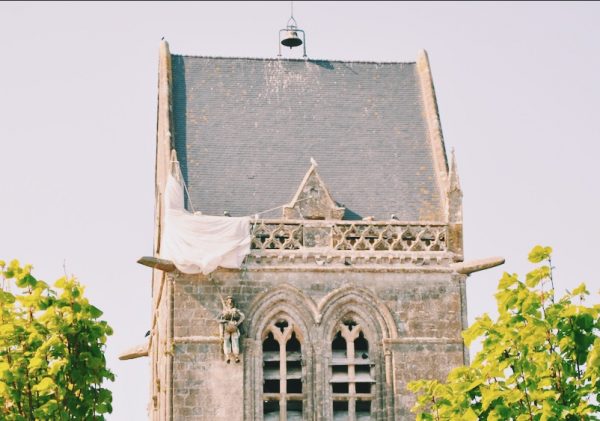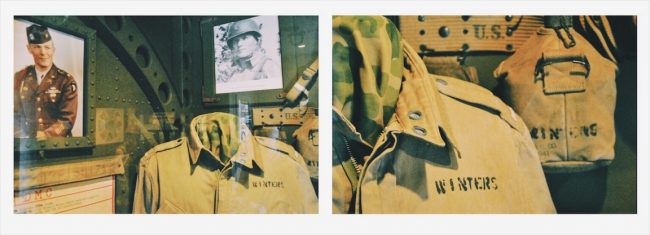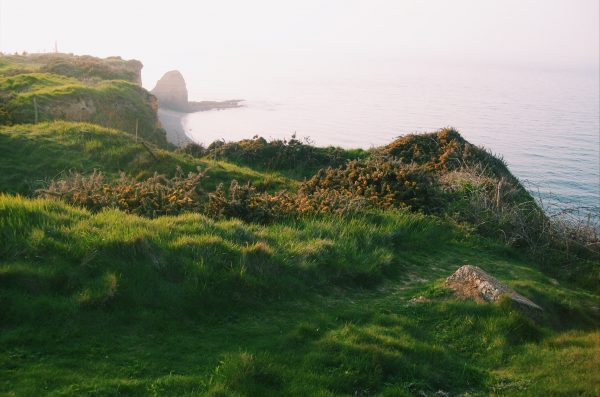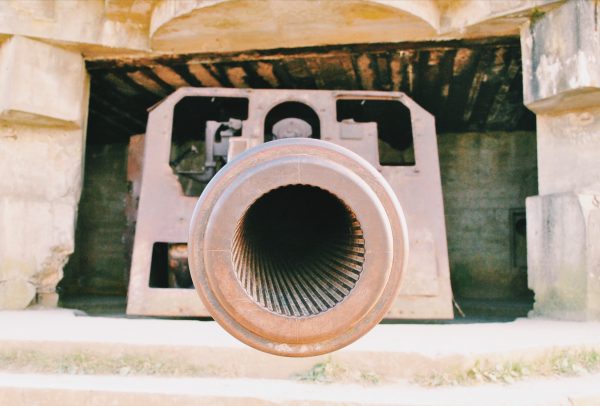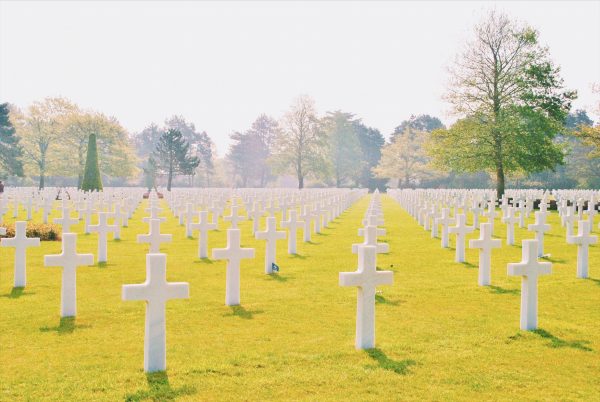The Allied invasion of Normandy is certainly one of the defining events of World War II. More than 6,000 ships, nearly 2 million soldiers, and three years of deep planning were required for the unprecedented assault.
Also known as Operation Overlord, the invasion was conducted in numerous phases. It began with the airborne drop of 23,000 British, American and Canadian paratroopers behind the enemies lines shortly after midnight. Then, at around 3A.M an aerial attack on German defenses commenced, being followed up by a naval bombardment. The biggest amphibious invasion of all time began at 6:30A.M.
Our fascination with Operation Neptune, the cross-Channel invasion and amphibious landings took us to Normandy. The trip was a journey of discovery where we retraced the footsteps of those brave soldiers on their road to victory across the D-Day landing beaches, key towns and battle sites of this wonderful French region.
We should always remember that without the courage and sacrifice of those young Canadian, American, Brits, Polish, French, Australian and New Zealand soldiers who defended the universal values of peace and freedom, the world today would be a different place.
Sainte-Mère-Église
By midnight, in a clear, moonlit night, tens of thousands of American paratroopers were dropped through heavy cloud cover in an attempt to capture strategic bridges, roads, crossroads and key villages. But, things didn’t go according to plan and many of them were dropped in the wrong area and scattered over many miles.
The quaint, quiet Sainte-Mère-Eglise was a strategic crossroads town situated along the N13 which was the road that led to Utah and Omaha beaches. The town became known because of the paratrooper John Steele of the 505th Parachute Infantry Regiment.
On the night of the 5th to the 6th June 1944, Steele’s parachute caught on the Church Tower throughout the intense ground battle. After trying in vain to loosen his parachute and pretending to be dead in order to avoid being shot by the Germans, he was taken prisoner. But not for long as John managed indeed to escape. Three days later, he joined the Allied lines and was transferred to a hospital in England.

The famous church tower upon which the American paratrooper John Steele landed and became entangled as he parachuted into Normandy
Memorial Liberation Stone at Km 0
Airbone Museum
Inaugurated in 1964, the Airborne Museum is the biggest museum in Europe devoted to the American parachutists involved in the invasion of Normandy.
Brécourt Manor Assault
Lieutenant Richard Winters, the commanding officer of the heroic Easy Company, was given orders to disable a German artillery position at Brecourt Manor. The successful assault, which was described by historian Stephen Ambrose in his book Band Of Brothers, is still considered one of the best examples of small-unit tactics and large-testicled badassitude ever demonstrated.
Sainte-Marie-Du-Mont
Musée de la Libération
Sainte-Marie-du-Mont was the first village to be liberated during the D-Day invasion in 1944. Right across the square, the Musée de la Libération houses a wonderful collection of equipment, weaponry, vehicles and personal items used by the paratroopers of the 101st Airborne Division, the soldiers of the 4th Infantry Division, beach engineers and US Navy seamen who took part in the liberation of Sainte-Marie-du-Mont.
Boutique Le Holdy
Located in the heart of Sainte-Marie-du-Mont, this little shop offers impressive World War II memorabilia.
Saint-Côme-du-Mont
If you, like me, are a fan of HBO series Band Of Brothers, the Dead Man´s Corner Museum is a site you simply can not miss. The two-story building that sits on crossroads at the corner of a country road leading to St-Côme-du-Mont, was used at that time as the headquarters and then a nursing station for German paratroopers, before becoming the HQ for the 101st Airborne Division.
The name of the museum derives from a terrible event that took place on 8th June. The Germans had the order to defend tenaciously the highly historical place of St-Côme-du-Mont, the last bastion before Carentan, until their last man died. The 101st had been assigned the mission of capturing the key town of Carentan, but the Germans had the causeway leading into the town covered with a German 88-mm anti-tank gun.
An American tank of the 70th Tank Battalion got hit by it at the road junction and burned out with the commander, 1Lt. Walter T. Anderson, sitting upright in the turret. From that day on, the passing soldiers and vehicles described the T-junction as “the corner with the dead guy“. Later, it would be shortened to “Dead Man’s Corner“, hence the museum’s name.
The magnificent D-Day Paratroopers Historical Center is claimed to have the world’s largest collection of German and American paratrooper memorabilia. I absolutely loved seeing authentic items that belonged to the D-Day airborne troops especially the ones owned by Major Dick Winters and his heroic men of the Easy Company.
Winters, who has been considered as the most recognized company commander of World War II´s European theater, once said: “I´m not a hero, but I served in a company of heroes”.
Carentan
We followed the path of the Easy Company and head to Carentan, a Norman town that was a key position between the two American landing beaches of Utah and Omaha.
Pointe-Du-Hoc
Pointe du Hoc was the highest point between Utah Beach to the west and Omaha Beach to the east. The prominent cliff overlooking the English Channel was heavily fortified by the Germans with concrete casemates and gun pits containing six 155mm artillery pieces.
Although the Allies had already bombed the battery many times before the landing, it was determined that Pointe du Hoc should be attacked by ground forces. In order to ensure its complete destruction, the 2nd and the 5th U.S. Ranger Battalion, under the direction of Lieutenant Colonel James E. Rudder, were given the daunting task of scaling the impossibly steep, 30m-high cliffs before dawn, seizing the fortifications and disabling the guns.
Reminders of the war remain in the dramatic promontory peninsula. The bombs craters left by aerial bombing and naval artillery shells give you the impression of being on the lunar surface.
Landing Beaches
We visited the landing beaches on a brilliant, April morning. The once bloody-stained beaches code-named Utah, Omaha, Gold, Juno and Sword were in utter peace and serenity that day. Walking along the seemingly unending stripe of sand, I couldn´t help but reflect on the overwhelming odds the soldiers had to face over the course of the “longest day”. Seven decades ago, these bucolic shores were a living hell.
Blockbuster feature films such as The Longest Day and Salving Private Ryan have perfectly depicted the unimaginable horror of those men who crossed the seas in order to assail foreign shores.
Utah Beach
Fortunately, the troops soon overcame the German defenses and Utah beach, the westernmost landing zone, was taken without many losses. However, at Omaha it was a different story.
Omaha Beach
Located 12 km East of Utah Beach, Omaha was the largest of all the five beaches and turned out to be most costly in casualties. The number of casualties at Omaha was definitely much higher than at the other landing points put together. German defense was well-organized. Even before the soldiers hit the beach, many boats received direct artillery hits or struct mines.
The rough seas, the lack of tanks support and the ineffective aerial bombardment made matters worse. As the troops hit the water, their heavy equipment dragged them down and had serious difficulties keeping afloat. Sadly, many of the soldiers never made it ashore.
Les Braves memorial stands on the shores of bloody Omaha to honor the unbelievable bravery the soldiers showed that terrific day. These men, who selflessly fought and died for our freedom, should always linger on our memories.
Juno Beach
Upon hitting the beach, the 3rd Canadian Division began the deadliest run of their lives at Juno Beach, defended by elements of the 736th regiment of the 716th German infantry division. By the beach, a Canadian Churchill Tank serves as a monument to pay tribute to the Canadian tanks units which landed on D-Day.
German Batteries- Longues-Sur-Mer
Overlooking the ocean from the top of a 65-metre high cliff, the Longues-sur-Mer artillery battery situated between Gold Beach and Omaha Beach, includes a firing command post and four casemates, each housing a 150mm artillery piece.
Also known as ‘Batterie Allemande’, the battery was a major element of the Atlantic Wall and posed a real threat to the ships taking part in the D-Day landings .
Normandy Cemeteries of D-Day
Normandy American cemetery and Memorial
Overlooking Omaha Beach and the English Channel, the heart-breaking Normandy American cemetery and Memorial at Colleville-sur-Mer holds the graves of 9,387 US soldiers who died in the D-Day invasion and subsequent missions.
Oriented westwards towards their native land, the sight of the endless lines of the crosses is utterly sobering. As we solemnly walked through the cemetery, we coincided with some veterans accompanied by their families who were laying flowers and paying tribute to their fallen friends.
Among the American soldiers who found their final resting place at this cemetery are the son of president Roosevelt and two of the brothers (Robert and Preston) whose story the film Saving Private Ryan is based on.

The Niland brothers were the inspiration for the Steven Spielberg´s “Saving Private Ryan”. Robert, buried next to his brother Preston, was one of the four Niland brothers who were sent to war at the same time.
La Cambe German Cemetery
My heart was also broken in pieces as I walked through the austere La Gambe cemetery where around 21,222 German soldiers who lost their lives in Normandy are buried. Birth and death dates on the basalt graves made me break down in tears. Many of the fallen German soldiers, were just teenagers.
I remember getting particularly impressed when I passed by a grave of a soldier who was the same age as my students. For a second, I started to wonder about his dreams, his ambitions and fears. I´m sure many of them would have just been the same ones that I had when I was 16. I can´t forget all the atrocities committed by the Nazis, but I firmly believe he was just a terrified kid who gave his life for an incomprehensible cause, and therefore, he also deserves some kind of recognition.
In the centre of the cemetery stands an impressive mound of earth known as Tumulus which contains the bodies of 296 soldiers, of which 207 are unknown or unidentified.
Latest posts by Rakel (see all)
- Hotel Can Joan Capó- Adults Only, in Sineu (Mallorca) - July 12, 2023
- Northern Light Ranch, Kittila (Finland) - January 23, 2022
- A Quick Guide to Mallorca - November 16, 2021



